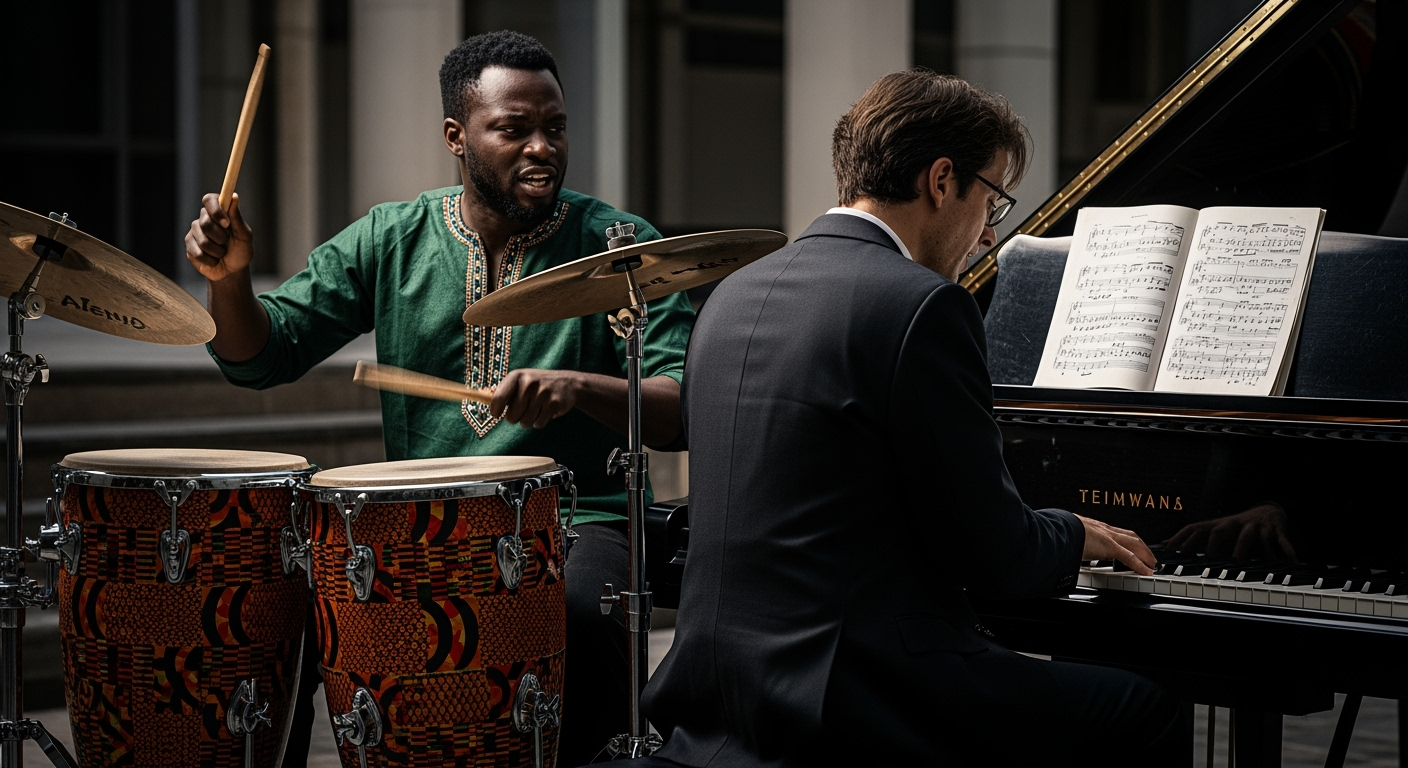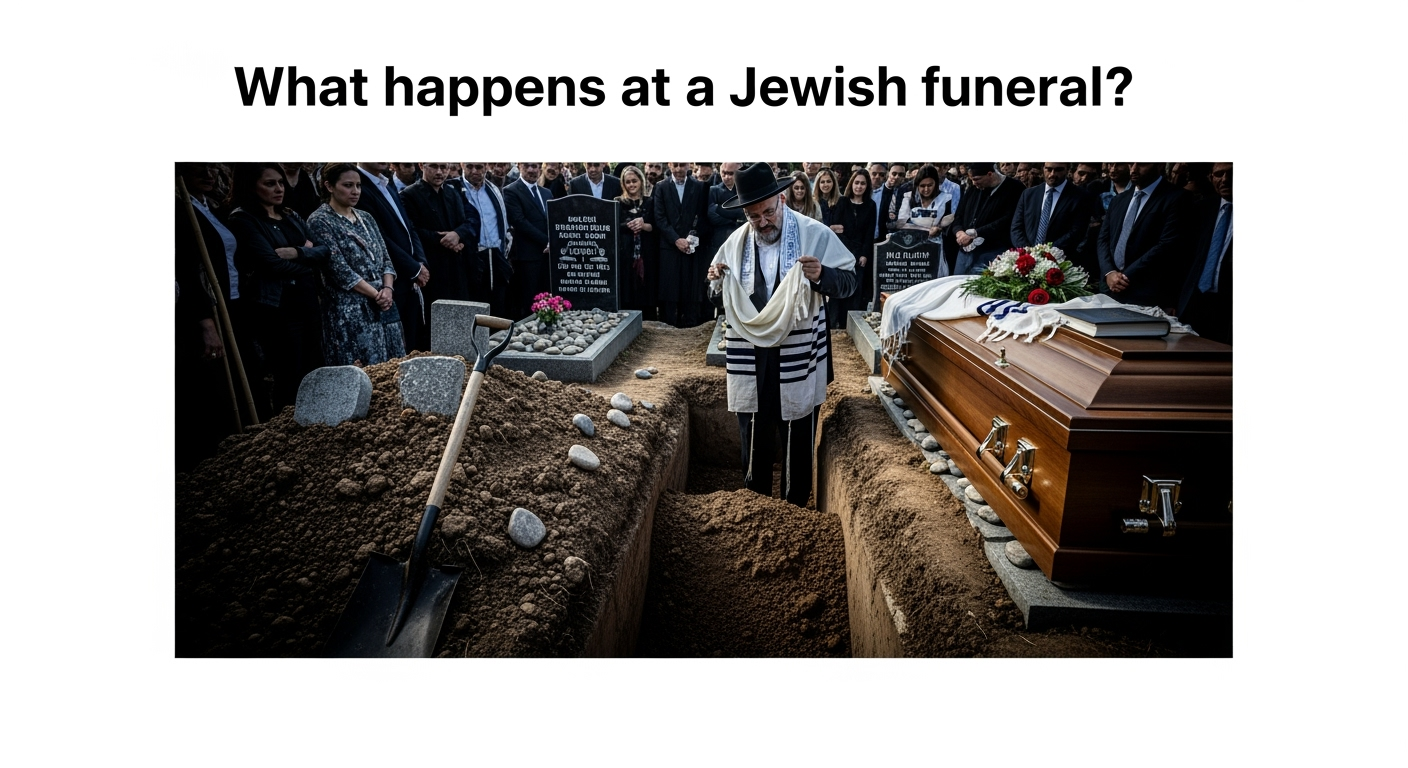Related Articles

Daring Daylight Heist Shakes Louvre, Priceless Jewels Vanish

"Das crazy" Crowned German Youth Word of the Year 2025, Reflecting English Influence and Linguistic Nuance





In Judaism, the final rites surrounding death are imbued with profound respect, community solidarity, and a deep-seated spiritual understanding of life's transition. Far from being a mere farewell, a Jewish funeral, or levayah, and the subsequent mourning periods, are intricate processes designed to honor the deceased, comfort the bereaved, and reaffirm the enduring cycle of faith and existence. These traditions, meticulously observed for centuries, offer a structured path through grief, emphasizing the sanctity of life even in its conclusion.
The Jewish approach to death begins immediately after passing, characterized by a commitment to simplicity, dignity, and ritual purity. At the heart of this initial phase is the Chevra Kadisha, or "sacred society," a volunteer group within the Jewish community dedicated to preparing the deceased for burial. Members of the Chevra Kadisha perform their duties with the utmost reverence, with men tending to men and women to women, upholding modesty even in death.
A crucial element of their work is shmira, the custom of "watching" or "guarding" the body from the moment of death until burial. A shomer, or watcher, often recites Psalms and other prayers, providing companionship and showing respect to the deceased, based on the belief that the soul hovers near the body during this turbulent time. This act of vigilance ensures the deceased is never left alone, symbolizing a profound commitment to their dignity.
Following shmira, the Chevra Kadisha performs tahara, a ritual purification. This involves carefully washing the body with warm water and ritually cleansing it through a continuous flow of water, accompanied by prayers and readings. This practice symbolizes a return to purity, akin to a newborn entering the world. After tahara, the deceased is dressed in tachrichim, simple white shrouds made of muslin or linen. These garments are identical for everyone, irrespective of social status, serving as a powerful symbol of equality in death and humility before God. Jewish men are also buried in their tallit (prayer shawl), with one of its fringes often rendered ritually unfit.
Jewish tradition strictly prohibits embalming, cremation, and open caskets, except where legally mandated. This is rooted in the belief that the body should be allowed to return to the earth naturally, facilitating the soul's atonement. The casket itself must be simple, unadorned, and made of biodegradable wood, often without metal components, to expedite decomposition. Ideally, burial occurs as quickly as possible, typically within 24 hours of death, as a mark of respect for the deceased, though delays are permitted to allow close family members to travel for the funeral.
The funeral service, or levayah, is a solemn and often brief gathering, typically lasting between 15 minutes and an hour. It may take place in a synagogue, a funeral home chapel, or directly at the graveside. The emphasis is on eulogizing the deceased and offering comfort to the mourners, rather than elaborate display. Flowers, music, and photography are generally discouraged, to maintain a focus on grief and reflection.
Before the service begins, immediate mourners—parents, spouses, children, and siblings of the deceased—participate in keriah, the tearing of a garment or a black ribbon worn on their outer clothing. This act is an outward expression of profound grief, symbolizing a tear in the fabric of their lives. During keriah, mourners recite "Baruch atah Adonai, Dayan Ha-Emet" (Blessed are You, Adonai, Truthful Judge) and may also say "Adonai natan, Adonai lakach, yehi shem Adonai m'vorach" (God has given, God has taken away, blessed be the name of God), acknowledging divine will even in sorrow.
The service typically includes prayers and readings from Psalms, such as Psalms 23, 15, 24, 29, and 90, which offer solace and reflect on mortality. A central component is the hesped, or eulogy, delivered by a rabbi, family member, or close friend. This address focuses on the positive qualities, accomplishments, and unique spirit of the deceased, providing comfort and celebrating their life without recounting every detail. The service often concludes with the El Malei Rachamim prayer, a plea for the soul of the departed to find eternal peace.
The procession to the graveside is a poignant part of the kevurah, or burial. Pallbearers carry the casket, sometimes pausing seven times en route to the grave, a tradition that signifies the community's reluctance to part with the deceased and acknowledge the hesitation to remove their presence.
At the graveside, after final prayers, the casket is gently lowered into the earth. A powerful and highly symbolic custom involves mourners and attendees participating in filling the grave. Each person typically places three shovelfuls of dirt onto the casket, often using the shovel backward. This act serves multiple purposes: it demonstrates that the deceased is not abandoned to strangers, it is a final act of kindness, and it helps mourners begin to accept the reality of the loss. The earth from Israel is sometimes placed inside the casket as well.
After the grave is filled, the Mourner's Kaddish is recited. This ancient Aramaic prayer, surprisingly, makes no mention of death or mourning. Instead, it is a profound declaration of faith, magnifying and sanctifying God's name, even in the midst of overwhelming grief. By reciting Kaddish, mourners affirm their continued trust in God's plan, demonstrating resilience and connection to the community. As attendees depart the graveside, they often form a double line (shura) for the mourners to walk through, symbolizing a communal embrace and the beginning of their reintegration into life. A ritual hand washing is often performed before entering a home after the burial.
Jewish tradition provides a structured framework for mourning, known as avelut, recognizing that grief is a process that unfolds over time. This framework balances intense sorrow with gradual reintegration into life, supported by community and spiritual observance.
The initial period between death and burial is called aninut. During this time, the immediate mourner, known as an onen, is exempt from certain positive religious commandments, focusing solely on preparing for the funeral and burial.
Immediately following the burial, the shivah begins, an intensive seven-day period of mourning. Mourners typically stay at home, receiving visitors who offer comfort. During shivah, traditional customs include covering mirrors, refraining from personal grooming (such as shaving or applying makeup), wearing leather shoes, and engaging in marital intimacy. These practices symbolize the disruption that death brings to life and encourage mourners to focus inward on their loss. The Mourner's Kaddish is recited daily during this time.
The next stage is shloshim, a thirty-day period that encompasses shivah and extends for an additional three weeks. While mourners begin to resume some daily activities, they continue to observe certain restrictions, such as refraining from parties, live music, and public entertainment. The daily recitation of Kaddish continues, providing a consistent anchor for the grieving process.
For those mourning a parent, the avelut period extends for a full twelve months, known as shneim asar chodesh. During this time, the Kaddish is traditionally recited for eleven months. This extended period acknowledges the unique depth of loss associated with a parent's passing.
Finally, the annual anniversary of the deceased's passing, known as yahrzeit, is observed. On this day, a special 24-hour memorial candle is lit in the home, and the Mourner's Kaddish is recited, often in synagogue. Another custom is the unveiling, a brief ceremony held at the gravesite, typically after shloshim and up to a year after burial, to formally dedicate the headstone (matzevah).
These traditions collectively reflect a profound respect for human life and the natural process of grief. Jewish funerals and mourning rituals are not about denying death, but rather about integrating it into life's tapestry with dignity, faith, and the unwavering support of community. They provide a sacred space for mourning while ultimately guiding the bereaved back toward a renewed engagement with life, always remembering those who have departed.